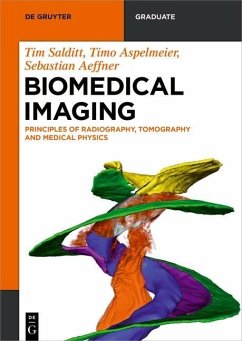Covering both physical as well as mathematical and algorithmic foundations, this graduate textbook provides the reader with an introduction into modern biomedical imaging and image processing and reconstruction. These techniques are not only based on advanced instrumentation for image acquisition, but equally on new developments in image processing and reconstruction to extract relevant information from recorded data. To this end, the present book offers a quantitative treatise of radiography, computed tomography, and medical physics.
Contents
Introduction
Digital image processing
Essentials of medical x-ray physics
Tomography
Radiobiology, radiotherapy, and radiation protection
Phase contrast radiography
Object reconstruction under nonideal conditions
Contents
Introduction
Digital image processing
Essentials of medical x-ray physics
Tomography
Radiobiology, radiotherapy, and radiation protection
Phase contrast radiography
Object reconstruction under nonideal conditions
Dieser Download kann aus rechtlichen Gründen nur mit Rechnungsadresse in A, B, BG, CY, CZ, D, DK, EW, E, FIN, F, GR, HR, H, IRL, I, LT, L, LR, M, NL, PL, P, R, S, SLO, SK ausgeliefert werden.
"While the book is primarily targeted at graduate students as the main audience, there is no doubt that other groups of readership such as researchers and professionals in medical imaging can also fully benefit from the material and the pedagogy of its exposure."
Witold Pedrycz in: Zentralblatt MATH 1397.92004
Witold Pedrycz in: Zentralblatt MATH 1397.92004


